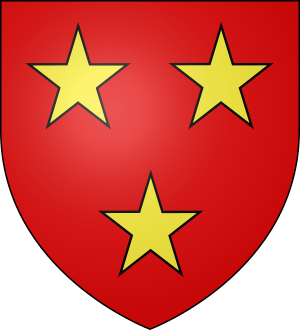John Sutherland, 9th Earl of Sutherland facts for kids
Quick facts for kids
John Sutherland, 9th Earl of Sutherland
|
|
|---|---|

Earl of Sutherland Coat of Arms
|
|
| Born | Unknown |
| Died | 1514 Dunrobin Castle, Sutherland, Scotland |
| Allegiance | Scotland |
| Relations | John Sutherland, 8th Earl of Sutherland (father) Elizabeth Sutherland, 10th Countess of Sutherland (sister) |
John Sutherland (died 1514) was the 9th Earl of Sutherland. He was also the chief of the Clan Sutherland, a famous Scottish clan from the Scottish Highlands.
Early Life and Challenges
John was the son of John Sutherland, 8th Earl of Sutherland. We don't know exactly when he was born. In 1509, he was named the official heir to his father's title.
However, John faced a big challenge. He had a condition that made it hard for him to manage things. A historian named Sir Robert Gordon, 1st Baronet said that John was "weak of judgement." This meant he struggled to make decisions or lead.
His sister, Elizabeth, was very smart and capable. She was married to Adam Gordon, a son of the chief of Clan Gordon. Because John found it difficult to govern, Elizabeth and her husband often managed the family's lands and affairs.
Becoming Earl
Even though John was the official Earl, his sister Elizabeth and her husband Adam Gordon largely controlled the Sutherland estates. For a few years, Crown officers also helped manage the lands.
Adam Gordon saw that John was unable to lead. He wanted to make sure the family's lands would be passed on properly. He worked to arrange for his wife, Elizabeth, to be recognized as the true heir. This was important because another relative, Alexander Sutherland, also claimed the title.
In 1509, John was officially named his father's heir. However, he didn't immediately take full control of the lands. This was likely because of his condition. So, the rents and spending for the Sutherland estates were managed by Andrew Stewart, the Bishop of Caithness.
The Succession
In December 1512, John was finally given possession of the earldom at Dunrobin Castle. This was done so that Adam Gordon could start a legal process. This process, called a "breive of idiotry," was a way to legally determine if someone could manage their own affairs.
A special group of people, including important lords, met in Perth. They wanted to be fair and avoid local influences. John himself was examined. He seemed to understand what was happening, even if he had some difficulties.
The group asked John who should inherit his lands if he had no children. He clearly stated that his sister Elizabeth, her husband Adam Gordon, and their children should be his heirs. He fully agreed to this.
John Sutherland, the 9th Earl, died about a month after this meeting in Perth. His sister, Elizabeth Sutherland, 10th Countess of Sutherland, then became the 10th Countess.
Elizabeth's son with Adam Gordon was Alexander Gordon. He became the "Master of Sutherland." However, Elizabeth's younger brother, Alexander Sutherland, still tried to claim the title. This led to a conflict, and Alexander Sutherland was killed in 1519 at the Battle of Alltachuilain.
Later, Alexander Gordon's son, John Gordon, became the 11th Earl of Sutherland.

